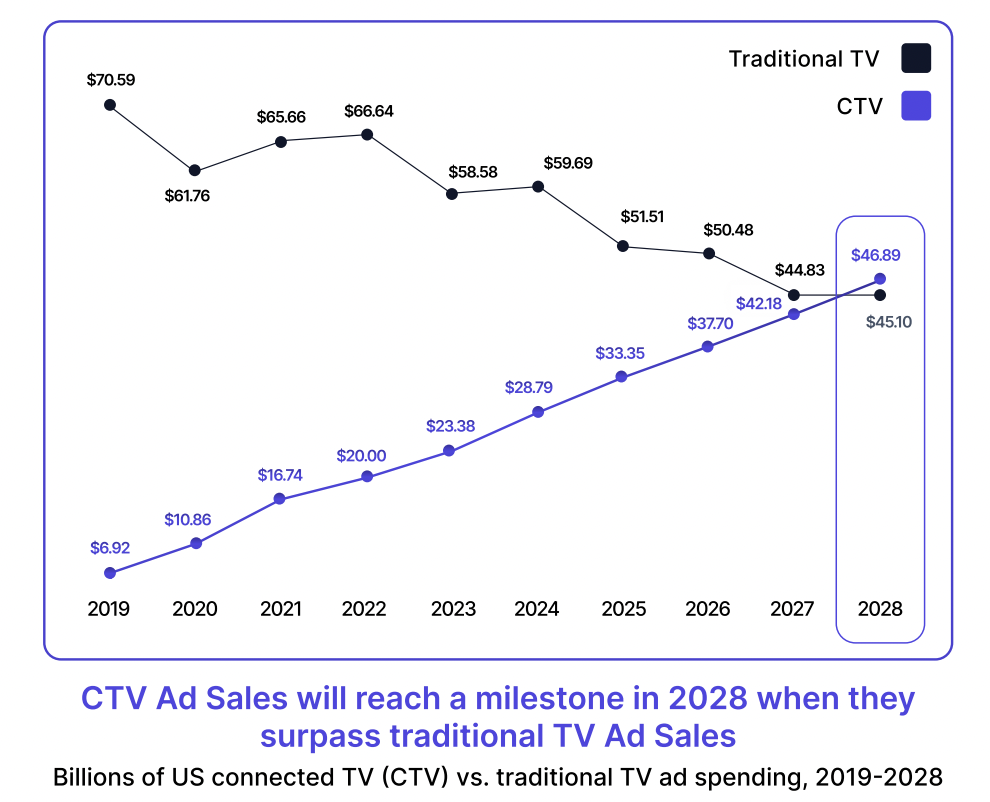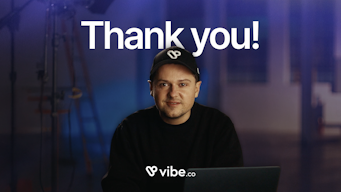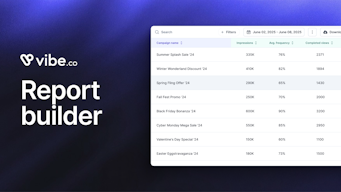The Attribution Illusion: Incrementality Is the Way Forward for CTV

For decades, marketers have operated under a kind of mass delusion: we’ve optimized for impressions, clicks, and platform-reported conversions, not because they told the whole story, but because they were easy to measure. They gave us a reassuring sense of control, but that era needs to end. And nowhere is this reckoning more visible than in Connected TV (CTV).
CTV advertising has grown up fast – In just six years, it’s gone from a specialty tech in 22% of U.S. households to a near-ubiquitous presence, with 94% now owning at least one streaming device — but without the ability to directly click on a streaming ad, it also exposes a fundamental weakness in digital marketing.

We’ve built an entire system around attribution models that can’t answer the most important question—what did this campaign actually cause to happen?
That’s why Vibe.co has massively expanded its ecosystem to include every kind of incremental testing solution our advertisers need.
Why Incrementality Actually Matters
Incrementality isn’t just a toggle or add-on, it’s a measurement framework built to tell the truth by isolating the causal impact of your advertising and the lift that wouldn’t have happened without it.
Eric Seufert, a top voice in growth marketing, puts it bluntly: “Incrementality is everything,” and he’s right. In a world where attribution signals are vanishing and platform reporting is increasingly opaque, measuring actual impact—not just activity—is the path forward.
Maor Sadra, CEO of INCRMNTAL, has said the same: what matters is the value you create, not the numbers a platform hands you after optimizing its own algorithm.
Why So Many Marketers Avoided It, Until Now
If incrementality is so clearly better, why has it taken this long to catch on?
Part of the reason is psychological: incrementality forces uncomfortable truths to the surface. Testing often reveals that a large portion of your attributed conversions would have happened anyway. That branded search surge you celebrated? Maybe it was driven by existing customer intent, not a new channel buy. That can be hard to swallow when you’re under pressure to “prove performance” week over week.
There’s also a historical infrastructure problem: until recently, measuring incrementality meant designing sophisticated geo-lift tests, setting up audience holdouts, and wrangling data scientists to model results, which was often out of reach for all but the largest teams with experimental design expertise.
Why CTV Depends on It
CTV, more than any other channel, depends on incrementality to validate its impact. You can’t fake engagement on the biggest screen in the house because it doesn’t come with a click. And since CTV lives outside the browser and across fragmented devices, many traditional attribution models simply don’t work.
That’s why platforms and performance-minded marketers are increasingly turning to causal measurement. As Vibe.co board member Ari Paparo noted during CES 2025, CTV’s long-term viability—especially as it opens up to a wider mix of advertisers, from national brands to niche DTC players—hinges on the industry’s ability to prove that ads actually drive lift.
That means geo-testing, Public Service Announcement or “ghost ad” frameworks, modeling behavior changes between exposed and unexposed users, and rejecting “view-through” metrics that offer the illusion of precision but say nothing about true performance.
Data from partner platforms like Haus shows that in CTV campaigns using proper holdouts, the actual lift can vary dramatically. Haus’s recent studies show how brands running YouTube and CTV campaigns have identified where their spend is driving genuine lift, and where it’s just flattering the status quo. The takeaway: if you’re not testing, you’re guessing.
Why Now?
So why is this happening now, after years of inertia?
First, the old tools are breaking down: privacy regulations, IDFA deprecation, cookie loss, etc. have hollowed out the deterministic tracking models that digital marketing was built on. Attribution is now probabilistic by default levels the playing field. If we’re already estimating, we might as well estimate honestly!
Second, the tooling has finally caught up. Platforms like Meta now offer uplift-based optimization objectives; Google and Amazon have rolled out geo-based brand lift solutions; Third-party players like Measured, INCRMNTAL, and Haus have made incrementality testing accessible even to mid-size brands and agencies. It's no longer something only available to advanced quant teams.
And third, the economy is forcing everyone to be more honest, as CFOs and procurement teams are asking hard questions.
What Smart Marketers Are Doing
The smartest teams today aren’t just “measuring incrementality," they’re building it into the way they plan and buy media. They’re budgeting for tests the same way they budget for creative and designing campaigns with control groups, not just aiming for impressions, while using predictive models like PIE (Predictive Incrementality Estimation) to extrapolate from small experiments to large-scale budget decisions.
They’re also pushing platforms to support this shift. If a CTV or social partner can’t support a clean test or prove lift, they’re getting benched as marketers no longer have the patience for hand-wavy performance claims.
This shift benefits marketers and platforms alike. If a DSP or publisher can demonstrate real causal impact, they earn more trust, more budget, and better creative alignment.
From Attribution to Accountability
At its core, incrementality is a worldview that forces marketing to be accountable. It creates a shared language between brand and performance, between marketers and finance, between data science and storytelling.
For CTV, this is an inflection point: the reach is undeniable and the creative potential is enormous, but without honest, incremental measurement, the channel risks becoming just an expensive black box. If we want CTV to fulfill its promise as a performance driver we have to build the infrastructure of accountability around it now.
Can you say with confidence how many conversions your last CTV campaign drove that wouldn’t have happened anyway?
If you can’t, explore Vibe.co’s measurement ecosystem today.


